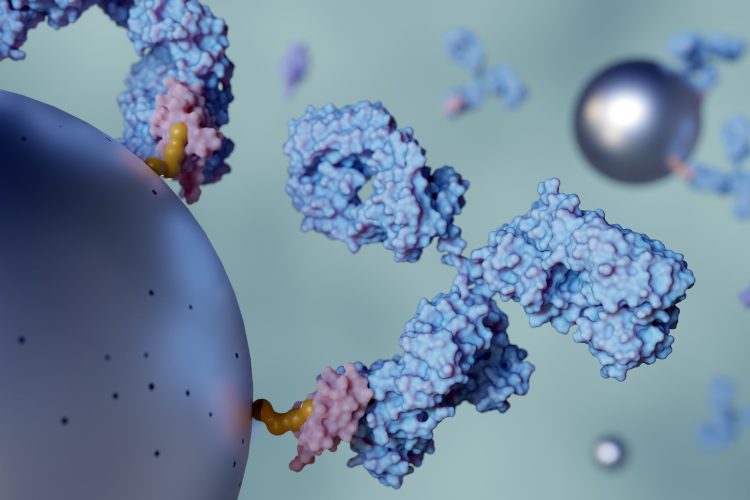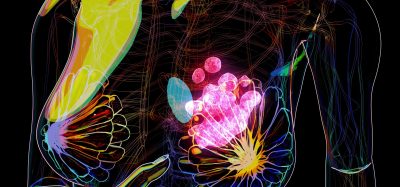Designing antibodies to think before they bind
Posted: 24 July 2025 | Drug Target Review | No comments yet
Standard antibody therapies bind their target and trigger a response. But what if the real breakthrough is designing antibodies that first recognise context before they act? This article looks at how bispecifics are becoming smarter, more selective and more precise.


Antibody therapies have transformed cancer treatment, yet their limits are becoming increasingly clear – particularly when tumours evolve, evade immune detection or develop resistance to existing drugs. For Dr Jhong-Jhe ‘JJ’ You, Vice President of Antibody Discovery at AP Biosciences, these challenges are not setbacks. They are starting points.
With a background in neurobiology, immuno-oncology and bispecific engineering, JJ now leads the development of antibody candidates designed to go further. His team focuses not only on potency, but on rethinking how antibodies behave – where they act, what they target and how precisely they can be controlled:
“We are building antibodies that solve problems traditional monoclonals cannot.”
From academia to antibody architect
JJ’s scientific path began in neurobiology with a PhD followed by a postdoctoral role at the Genome Research Center at Academia Sinica. That shift into translational research changed the direction of his career.
“Those experiences transformed my career path and shaped my perspective on both the scientific and strategic nuances of biologics innovation,” he says.
Today, JJ leads discovery and early development at AP Biosciences. His work centres on the OmniMab and T-cube platforms, which are designed to improve how antibodies are identified, targeted and controlled.
Engineering against resistance: the case of AP402
HER2-positive breast cancer already presents a therapeutic challenge, marked by aggressive tumour growth driven by overexpression of the HER2 receptor. The presence of p95HER2 – a shortened version of the receptor that still drives tumour growth – makes treatment even more difficult. This variant is not recognised by standard HER2-targeted drugs.
The candidate AP402 was designed to address this specific problem.
The main challenge was engineering a molecule that could precisely engage p95HER2 and simultaneously trigger immune activation through CD137.
“The main challenge was engineering a molecule that could precisely engage p95HER2 and simultaneously trigger immune activation through CD137,” JJ explains.
To achieve this, the team had to create a novel binding domain that could recognise p95HER2. However, binding alone was not enough. The antibody also needed to activate T cells – but only in the tumour.
This is where CD137 comes in. CD137 is a receptor on T cells that boosts their activity, but only when clustered. By designing the antibody to activate CD137 only in the presence of p95HER2, the team created a more controlled immune response and reduced the risk of off-target effects.
The result is a bispecific antibody that does more than bind – it responds to its environment. Using the OmniMab platform, the team identified binding sites that avoid structural clashes and refined the molecule’s shape to improve stability and manufacturability. Crucially, they built in conditional CD137 activation, ensuring that T cells are triggered only when both CD137 and p95HER2 are present in the tumour.
The outcome is a bispecific designed to overcome resistance and activate the immune system precisely where it is needed.
Tackling cytokine release syndrome
Bispecific antibodies can be highly potent, but that potency carries risks – particularly triggering the condition cytokine release syndrome (CRS). CRS is a systemic immune reaction that can escalate rapidly. JJ’s team saw this as an opportunity to rethink the design of immune activation.
T-cell activation is essential in immunotherapy, but it must be controlled. Many bispecifics use CD3 to activate T cells, which can do so indiscriminately – even outside the tumour. This increases the risk of serious side effects.
T-cube is built around a key principle: conditional immune activation.
The T-cube platform developed by APBio takes a different route. It uses CD137 – a co-stimulatory receptor expressed only after T-cell activation, usually within the tumour microenvironment. By designing antibodies that require both CD137 and a tumour-specific antigen to engage, T-cell activation becomes more selective and better localised.
“T-cube is built around a key principle: conditional immune activation,” JJ explains.
This approach not only reduces the risk of CRS but also changes how immune engagement is defined. The antibodies are designed to bring targets close enough for activation, but not so tightly that they cause overstimulation. This balance supports immune response while limiting potential toxicity.
The dual-target potential of AP601
AP601 is another bispecific antibody in development; this time targeting CD73 and CD137 – proteins involved in immune suppression and T-cell activation, respectively. It is designed to block one of the tumour’s defence mechanisms while also enhancing immune activity.
This dual mechanism allows us to both remove a barrier and press the accelerator in one molecule.
CD73 contributes to an immunosuppressive environment by producing adenosine. AP601 blocks this pathway and activates T cells via CD137 – removing a barrier and accelerating immune response at the same time.
“This dual mechanism allows us to both remove a barrier and press the accelerator in one molecule,” JJ says.
AP601 is also engineered to avoid the ‘hook effect’, where excessive antibodies can reduce activity. It shows a clean dose response in preclinical studies and early signs of synergy when used with other treatments. The data so far is particularly promising in pancreatic cancer, where therapeutic options remain limited.
The new rules of antibody discovery
Antibody development is shifting from static, single-function molecules to more complex and programmable formats. These next-generation antibodies are designed to interact with the immune system in more precise ways, tackling challenges like tumour heterogeneity and immune evasion.
Antibodies are no longer just passive binders – they are becoming sophisticated delivery systems, switches and immune activators.
“Antibodies are no longer just passive binders – they are becoming sophisticated delivery systems, switches and immune activators,” JJ notes.
This shift includes antibody–drug conjugates, cell therapies and RNA-based medicines, as well as a growing interest in integrating platforms across modalities. At AP Biosciences, these principles are reflected in a pipeline that prioritises conditional activity and clinical adaptability from the outset.
JJ is particularly focused on applying new technologies to reveal unexplored biology – with an emphasis on mechanism-driven design rather than incremental improvements.
A pipeline with purpose
AP Biosciences is advancing several bispecific candidates, each developed with conditional activity and tumour selectivity in mind. Immediate priorities include:
- Launching Phase I/II trials of AP402 in p95HER2-positive cancers
- Advancing AP203 through Phase I trials
- Filing an IND for AP601
- Sharing Phase I data from AP505, a PD-L1/VEGF bispecific in partnership with Tasly.
Alongside this, the team continues to evolve its discovery platforms to support smarter, safer antibody design as new therapies move towards the clinic.
JJ concludes with a focus that reflects both the ambition and discipline behind the work:
“Our goal is clear: to build smarter antibodies that deliver better outcomes – and to do it efficiently, safely and globally.”
As bispecific design becomes more refined and context-aware, the path forwards in antibody discovery may depend not just on what antibodies bind to – but on how, where and when they act.


JJ joined AP Biosciences in 2013 as the company’s first employee, leading the development of the Omni-Mab human antibody phage display library and building a robust cell-based assay platform for screening and isolating functional antibodies for immunotherapy. Under his scientific and technical leadership, the company advanced multiple antibody discovery programs through IND-enabling studies, selecting lead candidates for clinical development. He also successfully applied for and executed two SBIR (Small Business Innovation Research) grants focused on anti-inflammatory biologics. Before joining AP Biosciences, JJ conducted postdoctoral research in antibody engineering at the Genomic Research Center, Academia Sinica. He earned his Ph.D. in Molecular Medicine from National Taiwan University.
Related topics
Antibodies, Antibody Discovery, Biologics, Immuno-oncology, Immuno-oncology therapeutics, Translational Science
Related conditions
HER2-positive breast cancer, p95HER2-positive cancers, Pancreatic cancer
Related organisations
AP Biosciences








